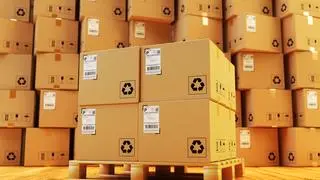The world wants to switch over from fossil fuels to biofuels, but there is a problem: biofuels derived from non-edible feedstock are expensive. Unless costs come down, initiatives such as the Global Biofuel Alliance may not take off.
A litre costs around ₹110, compared with ₹65 of the first-generation biofuels (derived from edible stuff like corn and soya).
Since we cannot afford to divert agricultural lands meant to grow food for production of biomass for biofuels, the need of the hour is the 2G biofuels.
The only way costs can come down is through breakthrough technology.
Broadly, there are two ways technology can help. One, by developing better catalysts that can increase yield and two, by finding ways of making other chemicals from biomass.
Biomass is essentially ‘lignocellulosic’. It contains three elements – lignin, hemicellulose (branched polymer molecules) and cellulose (long chain polymer molecules).
Cellulose is the stuff that becomes biofuels. Here is where catalysts will help, and scientists are working on developing better catalysts.
Hemicellulose can be made into valuable chemicals, called ‘platform chemicals’--mainly into furan dicarboxylic acid (fdca), which can replace the petroleum-derived terephthalic acid used in the manufacture of PET bottles. Lignin, a sort of glue that binds cellulose and hemicellulose together in plants, is generally considered to be a waste and the joke among chemical engineers is that you can make anything from lignin, except money. Lignin is fit only to be burnt in industrial boilers, but researchers say that the biochemical, that has high carbon content, can be mixed with bitumen for surfacing roads, locking-in carbon. Research is happening also in valorising hemicellulose and lignin. Valuable by-products can bring down the cost of the main product—biofuels.
Critical research is needed to develop catalysts (chemicals that do not participate in the reaction but enhance the reaction.)
Researchers have only recently begun exploring various catalyst candidates for biofuels. “Till now, only a few catalysts have been explored, which can break these strong polymers into useful chemicals and biodiesel,” says a January 2023 paper by researchers Tripti Chabbra and Venkata Krishnan of IIT Mandi, published in the journal, Fuel.
- Also Read: G20 leaders launch Global Biofuel Alliance
In another scientific publication titled ‘Nanotechnology based technological development in biofuel production: Current status and future prospects’, the authors, Zaheer Ud Din Sheikh, Anita Singh et al of the Central University of Jammu, J&K, note that “in biofuel production, nanoparticles can be broadly categorised into carbon based, metallic, ceramic, and semiconductors.” The paper delves into the merits of each.
Due to their features such as high adsorption, reactivity, and stability, nanoparticles can provide an essential breakthrough in biomass conversion, the authors say.
The conversion of cellulose into (sugar monomers such as glucose and xylose, and then into) biofuels is by a process called ‘enzymatic hydrolysis’. Nanoparticles, especially magnetic nanoparticles, can assist in making the biomass conversion process more economical, says the paper. It notes that nanoparticles of metal oxides are good, as they “enhance electron transfer and boost enzymatic activity and thereby increase biofuel production.” Further, nanoparticles of silver and gold promote the growth of microbes, which again help increase biofuel yields.
Scientists are taking nanoparticles a step further, tweaking their composition, size, shape and properties—a branch of science called ‘nanoarchitectonics’. Chabbra and Venkat Krishnan have worked the nanoparticles of a metal oxide, called niobium pentoxide (Nb2O5) into a flower-like structure (florets) to further enhance its properties.
Prof R Vinu of the Department of Chemical Engineering, IIT-Madras, has developed a ‘lignin-first approach’, which stands the biorefinery on the other leg. In this approach, the lignin is first separated and converted into phenols for use in some industries such as perfumery. The rest of the biomass, rich in cellulose and hemicellulose, is a better feedstock for the biorefineries, says Vinu, who is also the founder of a start-up named X2Fuels, a company that is setting up a plant to convert industrial wastes into a crude oil-like fuel.
Lab to industry
So, the biomass is there in the agricultural fields—India produces 750 million tonnes every year.
The technology is their—in the labs.
However, the technology, especially the new generation catalysts, are miles from commercialization. Dr Milind Patke, President (Biofuels), GPS Renewables, a 11-year-old Bengaluru-based biofuels manufacturer, told Quantum that he had no technology provider had offered the company any yield-enhancing nano catalyst.
- Also Read: EID Parry aims to transform into a biofuel and food & nutrition company: Muthu Murugappan
Vinu points out, it is one thing to develop a catalyst in the lab but quite another to mass-produce it. “To scale up the incorporation of nanoparticles in biofuels production, intensive research is needed to make the process more economical and enable biofuels to compete with conventional fuels,” say researchers of the Central University of Jammu.
The Ministry of External Affairs statement announcing the launch of the Global Biofuels Alliance, speaks of “facilitating technology advancements”. Technology is there; it needs governments’ support to journey from the labs to the industry. The jump from the labs to the industry is fraught with challenges. The industry needs to be given confidence to bet on a new technology. Patke feels that the government can help by mandating the oil marketing companies like IOC and BPCL, to buy some amount of 2G biofuels from the market.
When any new technology comes to the market, it faces a chicken-and-egg situation. The industry can drop costs by scaling up only if there is demand, but there will be demand only if costs are low. The way to break the jinx is for the government to mandate purchase—as it did for renewable energy (renewable purchase obligation) and compressed biogas (5 per cent mandatory blending with CNG). Biofuels need similar support, Patke said.








Comments
Comments have to be in English, and in full sentences. They cannot be abusive or personal. Please abide by our community guidelines for posting your comments.
We have migrated to a new commenting platform. If you are already a registered user of TheHindu Businessline and logged in, you may continue to engage with our articles. If you do not have an account please register and login to post comments. Users can access their older comments by logging into their accounts on Vuukle.